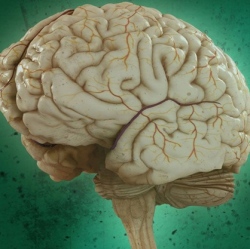
A team of researchers have developed a "memory prosthesis" brain implant, which could enhance human memory. Their findings were presented at the Society for Neuroscience meeting in Washington DC. The device is based on decades of research by Ted Berger and relies on a new algorithm created by Dong Song.
Their prosthesis is designed to bypass a damaged hippocampal section and provide the next region with the correctly translated memory.
The device is made up of electrodes which are implanted in the brain. It is designed to mimic the way we naturally process memories by giving small electric shocks to the hippocampus — the region of the brain involved in learning and memory.
These electric pulses imitate normal brain activity patterns, so the researchers hope it could help people with memory disorders such as epilepsy and dementia.
A group of 20 volunteers were fitted with the electrodes, and asked to participate in a training session where they were given a simple memory game. Each participant was shown images in a short presentation, then had to recall what they had seen up to 75 seconds later.
The researchers then looked at the responses of neurons in the subjects’ brains to see which regions were activated while they were using their memory. In a subsequent session, the implants were used to stimulate these specific brain areas with micro-electric shocks.
The study reports that the device boosted memory performance tests by up to 30%. The researchers hope in the future it could be adapted to be used as a tool to improve memory, vision, or movement.
"We are writing the neural code to enhance memory function," Song told New Scientist. "This has never been done before."
As we described earlier, a similar approach could eventually be used to implant new memories into the brain. “There is good reason to believe that the sharing of memory can happen,” says Berger.
Memory implants might sound far-fetched, but as the researchers point out, other recent successes in neuroprosthetics also had more limited beginnings. For example, cochlear implants now help deaf people hear by converting sound into electrical signals and early experiments have shown that implanted electrodes can allow paralyzed people to move robotic arms.
